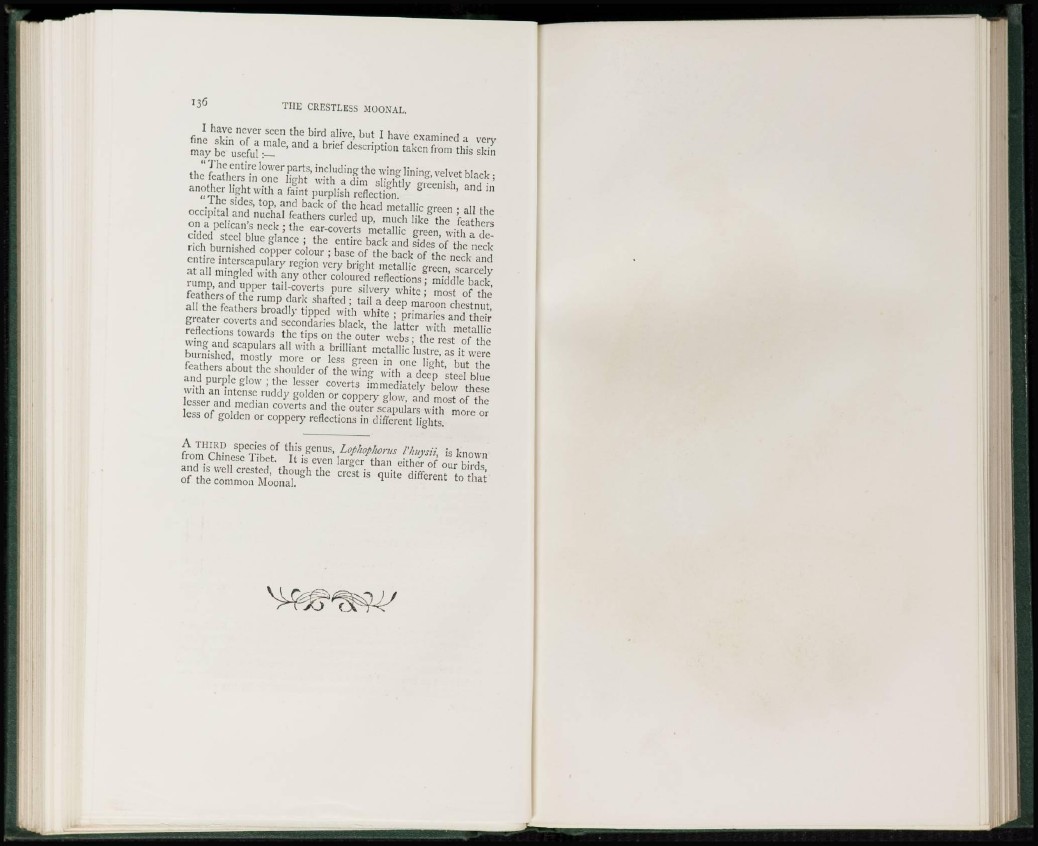
1 3 6 THE CRESTLESS MOONAL.
I have never seen the bird alive, but I have examined a very
fine skin of a male, and a brief description taken from this skin
may be useful:—
" T h e entire lower parts, including the wing lining, velvet black ;
the feathers in one light with a dim slightly greenish, and in
another light with a faint purplish reflection.
" The sides, top, and back of the head metallic green ; all the
occipital and nuchal feathers curled up, much like the feathers
on a pelican's neck ; the ear-coverts metallic green, with a decided
steel blue glance ; the entire back and sides of the neck
rich burnished cooner rr>lr,ni- •
.ntirc intcrscapulary region very bright metallic green, scarcely
at all mingled with any other coloured reflections ; middle back,
rump, and upper tail-coverts pure silvery white ; most of the
feathers of the rump dark shafted ; tail a deep maroon chestnut,
all the feathers broadly tipped with white ; primaries and their
greater coverts and secondaries black, the latter with metallic
reflections towards the tips on the outer webs; the rest of the
wing and scapulars all with a brilliant metallic lustre, as it were
burnished, mostly more or less green in one light, but the
feathers about the shoulder of the wing with a deep steel blue
and purple glow ; the lesser coverts immediately below these
with an intense ruddy golden or coppery glow, and most of the
lesser and median coverts and the outer scapulars with more or
less of golden or coppery reflections in different lights.
A T H I R D species of this genus, Lophophorns Vhuysii, is known
from Chinese Tibet. It is even larger than either of our birds,
and is well crested, though the crest is quite different to that
of the common Moonal.